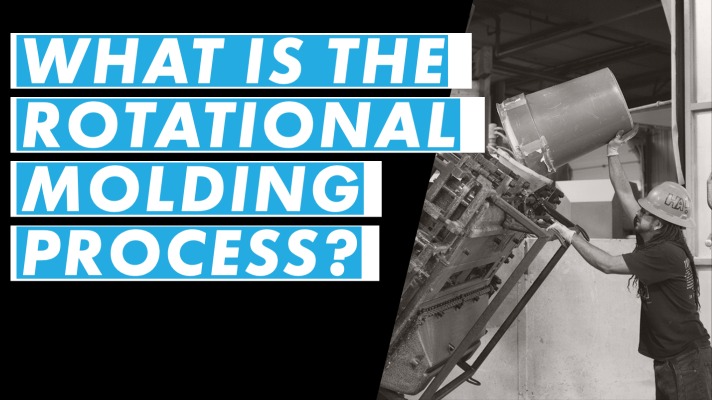What is rotational molding used for?
Rotational molding (commonly referred to as rotomolding) is a manufacturing process that is ideal for making hollow parts.
What is the rotational molding process?
The rotational molding process allows you to form a plastic part by coating the inside of a hollow mold with plastic material. Plastic, usually in powder form, is placed inside a metal mold and falls to the bottom forming a pool. The mold is then put in an oven and heated until the plastic melts enough to become sticky and cling to the surface.
The mold begins rotating as it enters the oven like a rotisserie except you are rotating the part on two separate axes (think of it as a merry-go-round riding on a Ferris wheel). Because of gravity the plastic wants to slide to the lowest area of the mold. Since the mold is turning the plastic keeps sliding downhill and as the powder moves over the hot mold surface another layer of particles melts in to the wall that is forming. When all of the powder has dissolved in to the walls it is time to cool the part back down and remove it from the mold.
While the mold is rotating, the plastic, driven my gravity, slides to the lowest point. The biaxial rotation (merry-go-round on a Ferris wheel) ensures that every area of the mold passes through this low point and another layer plastic adheres to the mold surface. You continue to cook the part in this manner until all of the plastic has attached to the mold.
What are the steps involved in the rotational molding process?
There are four primary steps to the rotational molding process:
- Charging the mold with the appropriate weight of the required raw material
- Melting the material and spreading it around the mold
- Cooling the part so that it returns to a solid state
- Removing the part from the mold and performing any necessary trimming operations.
What materials are used for rotational molding?
90-95% of rotationally molded parts are made from polyethylene in a full range of densities. In addition, rotomolders have had success with PVC , Polypropylene, nylon, fluorocarbons (think Teflon), PFA.

